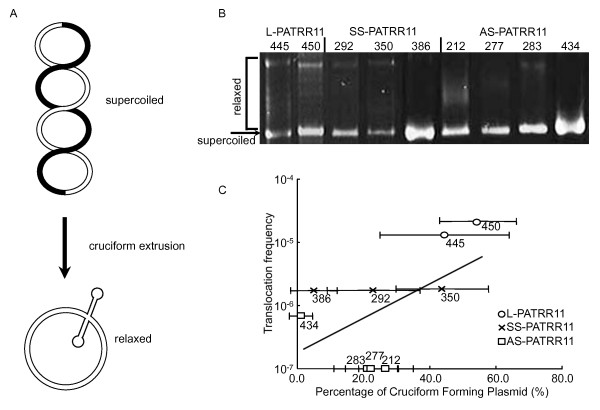Figure 2.
In vitro assay for secondary structure formation induced by negative supercoiling. (A) The palindromic region can form cruciform structures in the presence of negative torsion of the double-stranded DNA, which is relieved upon cruciform extrusion. (B) EMSA for plasmids during agarose gel electrophoresis. The arrow indicates the position for plasmids with a negative supercoil, while the bracket indicates that for a relaxed plasmid that corresponds to the fraction with cruciform extrusion. In general, relaxed plasmids show up as a ladder consisting of various topoisomers with different linking numbers, which appears as a smear due to the low resolution of gel electrophoresis. (C) Correlation between translocation frequency and secondary structure-forming propensity of the PATRR estimated by EMSA. The horizontal axis indicates the percentage of plasmid extruding a cruciform, while the vertical axis indicates the de novo translocation frequency in sperm. A linear correlation was observed and was statistically significant (r = 0.71, P = 0.03).

